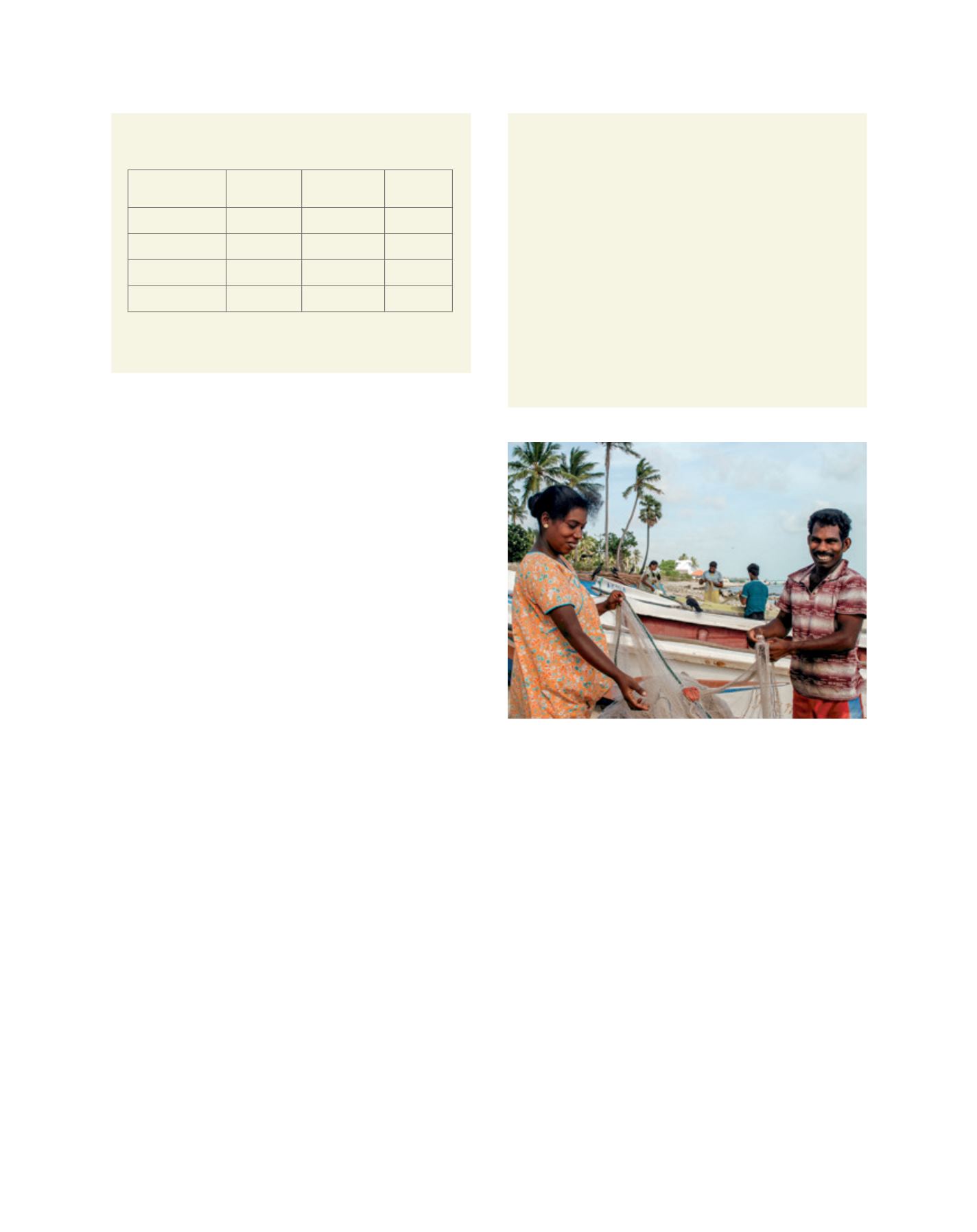

[
] 142
These changes have also led to a change from village-based
production systems to harbour-based production systems. With
increasing landings, distribution has become more organized. In
areas where fishing companies are involved, they are taking care
of all the post-harvest requirements and thus negating the role of
fisherwomen in post-harvest activities. This is also the case with
marketing, as local marketing is being replaced by marketing to
distant city centres and more men, often from outside the sector,
are carrying out marketing activities and gradually replacing the
traditional women fish vendors.
Government measures
The fisheries sector receives assistance from the Government
through various schemes and support programmes. However, of
particular importance is the legal protection provided to artisanal
fishers in the region. Fisheries come under the jurisdiction of prov-
inces in India. The coastal provinces in India under the Marine
Fishing Regulation Act have demarcated 3-5 nautical miles from
the coastline for artisanal fishing. Trawlers and other mechanized
fishing vessels are not allowed to fish in this zone. In Bangladesh,
industrial trawlers are prohibited from fishing at less than 40
metres deep. In Maldives, protection is provided to reef fisheries.
Apart from legal support, the governments also provide
monetary benefits to fishermen. However, such benefits are not
particularly targeted to promote or sustain family farming, but
are geared more towards improving income and welfare across
the fisher population. In India, the Government provides support
for improvement of fishing vessels including the purchase of
outboard motors, improvement of housing conditions, incen-
tives for educating children and support during fishing bans as
well as insurance coverage. In Bangladesh, support is provided
during the period when fishing is prohibited.
5
International efforts
Sustainability of small-scale fisheries is an important inter-
national agenda. The 1995 Code of Conduct for Responsible
Fisheries of the Food and Agriculture Organization (FAO) of
the United Nations and its Technical Guidelines highlight the
importance of the small-scale fisheries sector and emphasize
increasing contributions from this sector. The code also suggests
a pro-small-scale fisheries stance if there is a conflict between the
small-scale fisheries and others. However, the problem in defin-
ing small-scale fisheries in legally acceptable terms is a major
obstacle in targeting the sector. FAO has also recently published
the International Voluntary Guidelines on Securing Sustainable
Small-scale Fisheries, accepting that countries should form their
own definitions of small-scale fisheries and should follow a
human rights-based approach to the sector’s development.
Family farming and its manifestation in the fisheries sector, arti-
sanal and small-scale fishing and fish farming is the link between
the past, when institutions and opportunities in use of resources
were quite different, and the present, when markets have become
interconnected and a globalized society has emerged. Therefore,
to survive in this new society, artisanal and small-scale fishing and
fish farming families need to change. The challenge now lies in
identifying the core value of small-scale fisheries, such as equitable
access to resources and distribution of benefits, and empowering
the sector to pursue these values in the changed environment. Both
state and non-state actors need to play a major role in this regard.
The FAO Guidelines on Small-scale Fisheries provide a general
direction on the possible role of different stakeholders and the
same could be adopted based on national priorities to realize the
full potential of the small-scale sector.
Ownership of fishing craft in India
Source: CMFRI, 2010. Marine Fisheries Census, 2010. Department of Animal Husbandry,
Dairyingand Fisheries, Ministry of Agriculture, Government of India
Type of craft
Total
100% owned
by fishers
Share (%)
Trawler
35,228
11,247
32
Gillnetter
20,257
16,642
82
Motorized
71,313
40,718
57
Non-mechanized
50,618
40,349
80
A Sri Lankan fisher couple preparing for a fishing trip
Image: Y S Yadava, BOBP-IGO
Meeting family aspirations
Mahbub Mridha (52) is a small farmer living in Alampur village with
his wife Selina and two school-going daughters. A decade back,
Mahbub owned a small pond where he started fish farming to meet
the daily requirements of his family. With good farming techniques,
he was able to sell part of the fish harvested after meeting his
family’s requirements. This success encouraged Mahbub and
his family to undertake fish farming on a commercial basis. He
constructed another, larger pond with technical assistance from
the Department of Fisheries and adopted an integrated model
where agricultural and animal wastes are used as manure in the
fish pond, thus cutting operational costs. Selina assists him in pond
management and fish husbandry works and their daughters help
out after school hours. This diversification of livelihood has helped
the family to improve their income and savings, ensuring better
education for their daughters. As immediate needs are met, the
children are now planning to pursue university degrees, something
their parents could not afford.
D
eep
R
oots
















